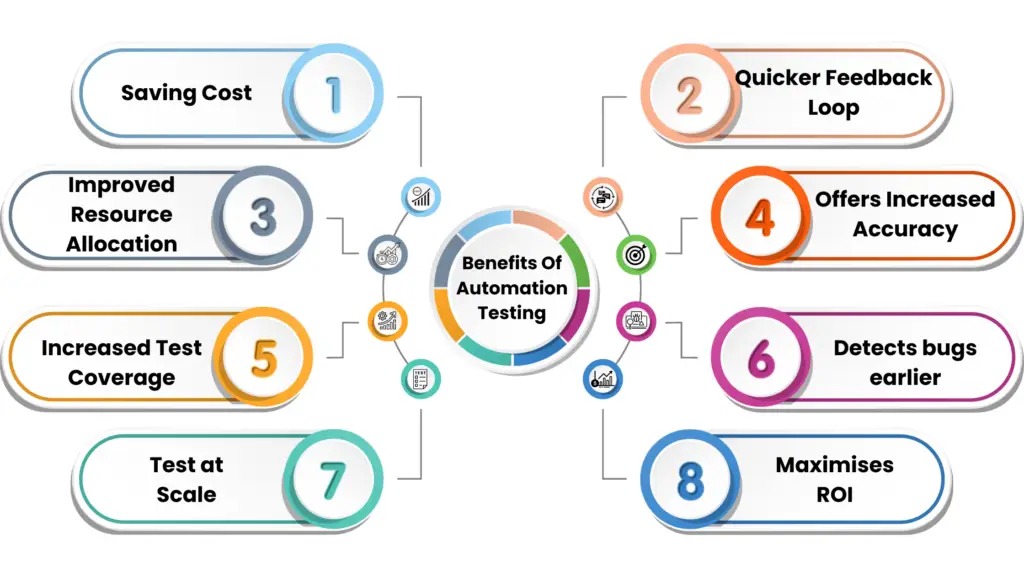Automated Testing in Software Testing: Transforming Quality Assurance Practices
Discover how automated testing is transforming software quality assurance by accelerating feedback, improving accuracy, and enhancing scalability. Explore key tools, benefits, and future trends shaping the future of software testing.
In the fast-paced world of software development, quality assurance (QA) has become more than just a final checkpoint—it’s a continuous process integrated throughout the software development lifecycle. One of the most significant advances in this area is the rise of automated testing in software testing. As businesses demand faster releases, improved accuracy, and scalable solutions, automation has emerged as a game-changer, transforming how quality assurance is conducted.
This article explores the impact of automated testing, how it differs from manual approaches, its benefits, key tools, and future trends in software testing.

What is Automated Testing in Software Testing?
Automated testing refers to the use of specialized tools and scripts to execute test cases automatically. Unlike manual testing, which requires human intervention to run tests and verify results, automated testing enables rapid, repeatable, and reliable execution of test scenarios with minimal human input.
Automated testing can be applied to various types of testing, including:
- Unit Testing
- Integration Testing
- Functional Testing
- Regression Testing
- Performance Testing
- API Testing
By automating repetitive tasks, QA teams can focus on high-level analysis, exploratory testing, and improving overall software quality.
Manual vs. Automated Testing: Key Differences
| Aspect | Manual Testing | Automated Testing |
|---|---|---|
| Execution Speed | Slow, time-consuming | Fast, runs in minutes |
| Accuracy | Prone to human error | High accuracy, consistent |
| Cost | Higher in the long term | Lower long-term cost |
| Scalability | Difficult to scale | Easily scalable |
| Best Use | Exploratory, usability | Regression, load, and repetitive testing |
While both types have their place in a balanced QA strategy, automated testing is essential for applications with frequent updates, complex integrations, or large-scale functionality.
Benefits of Automated Testing
1. Faster Feedback Loops
With automated testing integrated into CI/CD pipelines, developers get immediate feedback on their code. This allows for faster issue resolution and smoother development cycles.
2. Improved Test Coverage
Automated tests can cover more scenarios, platforms, and data sets than manual testing within the same timeframe. This ensures better application reliability and user experience.
3. Reusability and Repeatability
Once created, automated test scripts can be reused across multiple test cycles, making them highly efficient. Tests can be repeated under different conditions to ensure consistent behavior.
4. Cost Efficiency
Though initial setup may require investment, the long-term savings in time, effort, and error prevention significantly outweigh the cost.
5. 24/7 Testing
Automated testing can run overnight or in different time zones, accelerating delivery without increasing labor costs.
Automation in API Testing
One of the most valuable applications of automated testing is in API testing. APIs are at the core of modern applications, enabling communication between systems, services, and platforms. Ensuring their reliability, performance, and security is critical.
API testing tools allow QA teams to:
- Validate response data and performance
- Test authentication and authorization workflows
- Simulate various user roles and scenarios
- Automate tests as part of CI/CD pipelines
Popular API testing tools like Postman, SoapUI, and REST Assured make it easier for teams to automate end-to-end testing of APIs and detect issues early in the development process.
Popular Tools for Automated Testing
The ecosystem of automated testing in software testing includes a wide range of tools catering to different needs and technologies:
- Selenium: Open-source tool for web application testing across browsers.
- Cypress: Modern testing tool built for JavaScript applications with real-time reloads.
- Katalon Studio: All-in-one platform supporting web, mobile, API, and desktop testing.
- JUnit/TestNG: Unit testing frameworks widely used in Java environments.
- Postman: Popular for manual and automated API testing.
- Appium: For automating mobile application testing across Android and iOS.
Choosing the right tool depends on your application’s technology stack, team expertise, and testing goals.
Best Practices for Effective Automated Testing
To ensure success in automation, consider these best practices:
- Start Small: Begin with automating high-priority, repetitive test cases.
- Focus on Maintenance: Keep test scripts updated to reflect changes in the application.
- Integrate with CI/CD: Automate tests within your deployment pipelines for continuous validation.
- Monitor and Analyze Results: Use dashboards and logs to understand test results and refine test strategies.
- Balance Manual and Automated Testing: While automation is powerful, exploratory and usability testing still require a human touch.
The Future of Automated Testing
As technology continues to evolve, the future of automated testing in software testing looks promising, driven by trends such as:
- AI-Powered Testing: Artificial intelligence is helping generate smarter test cases, detect patterns, and even self-correct test scripts.
- Codeless Automation: Tools with drag-and-drop interfaces are enabling non-technical users to contribute to test creation.
- Test Orchestration and Observability: Automation platforms are becoming more intelligent, providing full visibility into test pipelines and metrics.
- Scalable Cloud Testing: Cloud infrastructure is being leveraged for faster execution, broader test coverage, and real-time results.
These trends are not only improving test effectiveness but also aligning testing more closely with agile and DevOps workflows.
Conclusion
Automated testing in software testing is revolutionizing how teams ensure product quality. By increasing speed, accuracy, and scalability, automation is turning QA from a bottleneck into a competitive advantage. Whether you're building a simple web app or a complex cloud-native platform, integrating automated testing early and strategically can dramatically enhance your software delivery process.
As testing tools become more intelligent and accessible, organizations that embrace automation now will be better equipped to handle the demands of future software development.